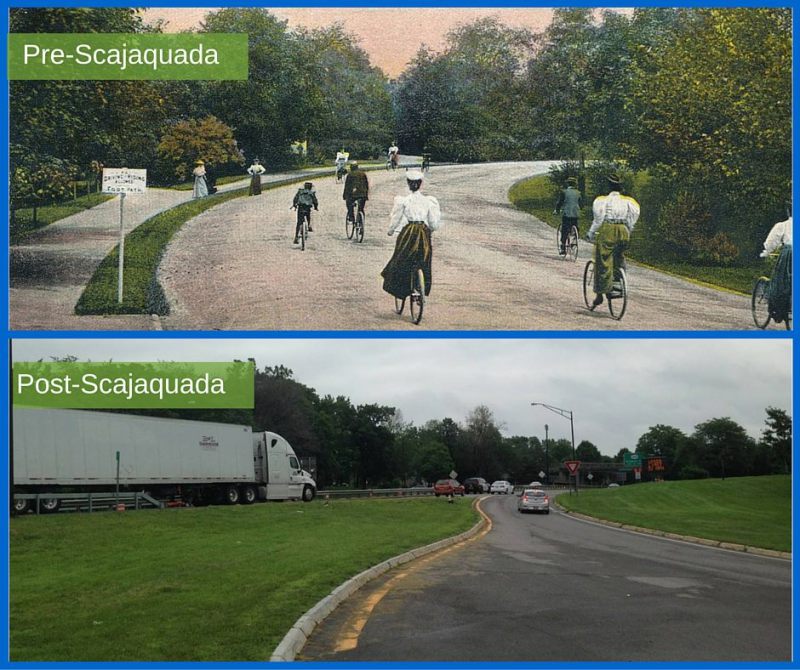The Scajaquada Corridor project was supposed to be a highway removal that would reconnect Buffalo residents with beautiful Delaware Park. The park is part of the public space network designed for Buffalo by revered landscape architect Frederick Law Olmsted. The construction of the expressway in the 1940s severely diminished it.
So why are locals cheering after New York State DOT announced yesterday that it's putting a stop to the removal project?
The answer, in short, is that the state DOT's plan didn't do enough for walking, biking, and overall safety.
"They finally scrapped their bad plan," said Justin Booth, director of the advocacy group GObike Buffalo. "And it gives us a redo option."
There were a number of problems with the state DOT's approach, said Booth, starting with the decision to prioritize fast car traffic in the new design.
Rather than replacing the Scajaquada with a walkable boulevard, the state DOT called for some intersections to be seven to nine lanes wide, including turn lanes -- creating intimidating and dangerous crossings for pedestrians.
State officials were also wedded to the idea of a center-running median, while locals preferred to see that space dedicated to usable park space. And locals wanted to convert the historic Stone Arch Bridge, currently part of the Scajaquada, to a car-free route for walking and biking, with a new street segment functioning as a bypass (see rendering below), but the state didn't incorporate that idea.

In addition, advocates like Booth were frustrated about the lack of protected bike lanes. "The DOT was only offering a wide shoulder for bike facilities," he said.
In its design critique, the Scajaquada Corridor Coalition said the state DOT's plan was "worse than what is there now, which is pretty bad."
The Olmsted Parks Conservatory gathered 5,500 signatures calling for the state to abandon its plan. Announcing their decision to start over, state officials noted yesterday that two-thirds of public comments had been opposed to the project.
Now that the state DOT is going back to the drawing board, three state lawmakers have pledged to keep the process moving with fresh designs that better reflect the public's aspirations, reports the Buffalo News.
State Assemblyman Sean Ryan told reporters that the withdrawal of the state's plan should not require another lengthy study period.
The Scajaquada Corridor Coalition and advocates like Booth are cheering the state DOT's willingness to rethink its approach.
"We’re happy to have an opportunity to restart the conversation," he said.





